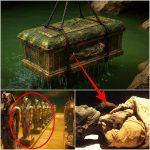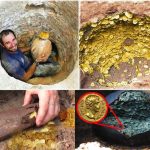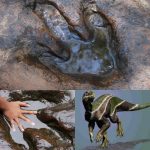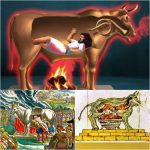The Frozen Titan: A Colossus Resurfaces from Yakutia’s Permafrost
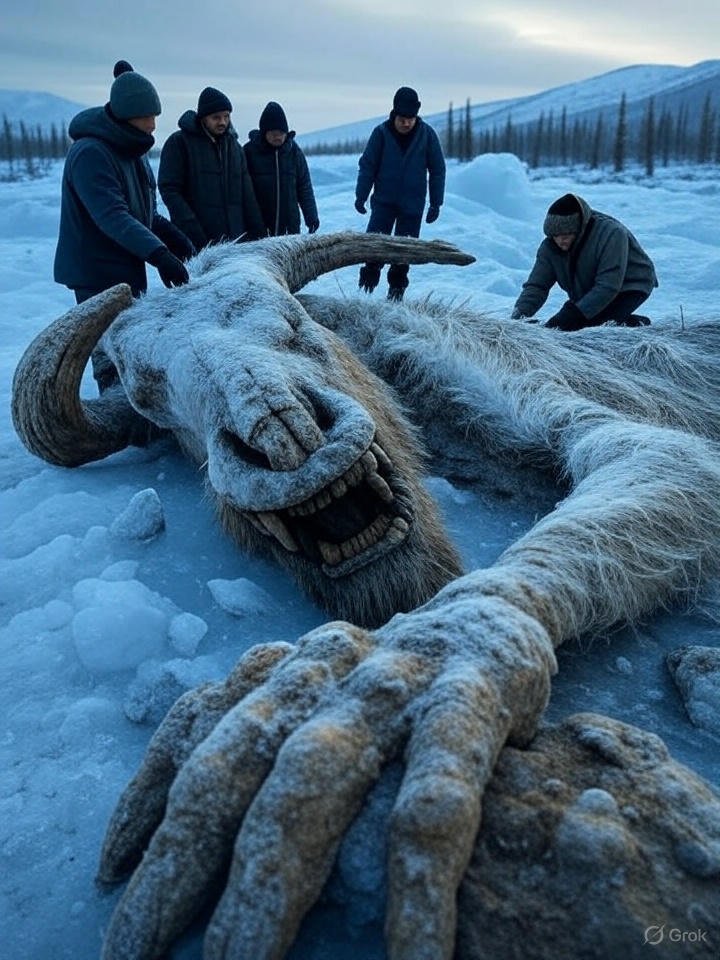
On September 24, 2025, at exactly 10:40 AM, the permafrost of Siberia revealed a discovery that is nothing short of extraordinary. Deep within the frozen lands of Yakutia, archaeologists uncovered the fossilized remains of an ancient horned giant—a colossal creature 20 meters long, preserved for centuries beneath layers of ice and snow. This remarkable find blends the wonders of modern science with the myths of the Yakut people, who have long spoken of such creatures in their folklore. Could this be an undiscovered Ice Age giant, or is it a legend brought to life in the frozen wilderness?
A Colossus Unearthed from the Ice

The discovery of this “Frozen Titan” has stunned the world. For centuries, the icy grip of Yakutia’s permafrost has preserved the secrets of the past, and now, this massive relic has resurfaced, offering unprecedented insight into a prehistoric world long forgotten. Measuring an astounding 20 meters in length, the creature’s remains are so well-preserved that every detail, from its curved horns to its robust bones, is clearly visible.
Experts have noted that the horned giant’s appearance closely matches descriptions from ancient Yakut legends, which tell of mythical beasts that roamed the tundra during the Ice Age. But the question remains: is this creature a real fossil, preserved through natural processes, or could it be something far more significant, perhaps even something that once existed alongside early humans in a forgotten ecosystem?
Science Meets Myth
For many, the discovery of this frozen titan seems to bring the mythical creatures of old to life. The Yakut people’s folklore is rich with stories of giant animals—horned and towering—described in great detail and passed down through generations. These stories have long been seen as just that: myths. Yet, as scientists carefully excavate the remains, they find that the creature fits the descriptions from these ancient tales all too perfectly.
Could this giant have been a creature of legend, brought to life through fossil evidence? While scientists are still analyzing the remains, the fact that its characteristics closely resemble those described by the Yakut people is both remarkable and mystifying. This discovery calls into question what we truly know about the animals that once roamed the Earth during the Ice Age—and whether some of the oldest myths hold kernels of truth.
Unlocking the Secrets of the Past
As researchers continue to study the fossilized remains, they hope to uncover more about this creature’s origins, its life during the Ice Age, and its role in the ecosystem of the time. Was it a herbivore, grazing on the tundra’s ancient vegetation? Or did it have a more complex role in the food chain, hunting smaller animals? Each new piece of evidence will help scientists piece together the puzzle of this ancient colossus.
and its role in the ecosystem of the time. Was it a herbivore, grazing on the tundra’s ancient vegetation? Or did it have a more complex role in the food chain, hunting smaller animals? Each new piece of evidence will help scientists piece together the puzzle of this ancient colossus.
Additionally, the preservation of such a creature in Yakutia’s permafrost offers important clues to the environmental conditions of the Ice Age, as well as how such ecosystems supported large, powerful creatures.
Conclusion
The discovery of the Frozen Titan in the depths of Yakutia’s permafrost is a breathtaking reminder of the Earth’s lost histories, waiting to be uncovered. Whether this horned giant is a long-lost creature from the Ice Age or a mythical legend made real, it stands as a testament to the mysteries that lie beneath the Earth’s frozen surface. As researchers continue to study its remains, the creature’s piercing horns seem to echo the untold stories of a world long vanished, reminding us that even in the most remote places, the past still has secrets to share.


